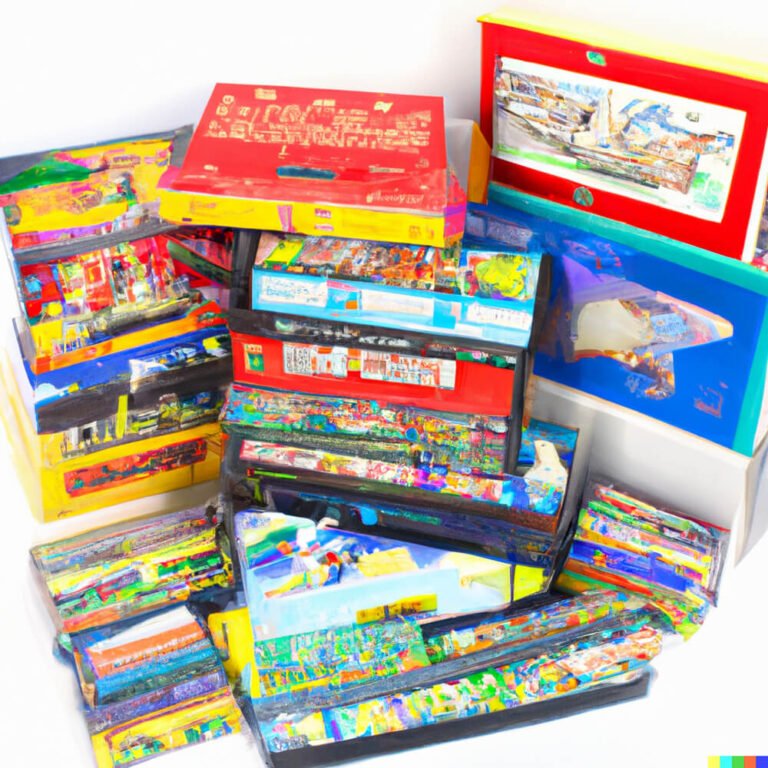Pachisi, a classic board game derived from pachisi, has a rich and fascinating history that dates back centuries. Originating in ancient India, it has evolved into various modern board games and continues to be enjoyed by people around the world. In this article, we will delve into the origins of Pachisi and explore its significance in different cultures, as well as its enduring appeal in the 21st century.
The evolution of Pachisi into modern board games is a testament to the influence of traditional games on contemporary favorites. Understanding the rules of Pachisi and how it has been played throughout history provides insight into its cultural significance and variations across different regions. Additionally, examining the importance of Pachisi in shaping society and entertainment sheds light on its lasting impact.
From popular culture references to modern adaptations, Pachisi remains relevant today due to its timeless appeal. By exploring its journey through time and space, we can gain a deeper appreciation for this classic board game and understand why it continues to thrive in our modern world. Join us as we embark on a journey through the origins and legacy of Pachisi.
Evolution of Pachisi Into Modern Board Games
Pachisi, a traditional Indian board game, has had a significant impact on the development of modern board games around the world. The game is believed to have originated in India around the 4th century AD and has since evolved into various versions and adaptations. Here are some examples of how Pachisi has influenced popular contemporary board games:
- Ludo: This game, also known as “Parcheesi” in the United States, is derived from Pachisi and shares similar gameplay mechanics. Ludo has become a beloved family game that is played by people of all ages.
- Trouble: The game Trouble features a Pop-O-Matic dice roller and gameplay that mirrors the movement of pieces in Pachisi. It has gained popularity for its simplicity and excitement.
- Sorry.: Another classic board game inspired by Pachisi is Sorry. The game incorporates elements of strategy and chance, making it an engaging and entertaining option for players.
These modern board games have taken inspiration from the traditional concepts of Pachisi while adding their own unique twists and features. The influence of Pachisi can be seen in their gameplay mechanics, design, and overall appeal to players of all ages. As a result, Pachisi continues to have a lasting impact on the world of board games, showcasing how traditional games have paved the way for contemporary favorites.
The Rules of Pachisi
Pachisi, sometimes called the National Game of India, is a classic board game that has origins dating back to ancient times. The game is believed to have been developed around the 4th century and has since evolved into various versions that are still enjoyed today. Pachisi is a game that involves strategy, luck, and skill, making it a popular choice for many board game enthusiasts.
The rules of Pachisi are simple yet intricate, requiring players to maneuver their pieces around the board while avoiding obstacles and capturing opponents’ pieces. The game is played on a cross-shaped board with four arms, each containing a set number of spaces. Players take turns rolling the dice and advancing their pieces accordingly, all while protecting their own pieces from capture and attempting to capture those of their opponents.
To begin playing Pachisi, each player selects four pieces of the same color and places them in their respective home areas or starting points. Once the pieces are in place, players take turns rolling the dice and moving their pieces around the board in a clockwise direction. Landing on an opponent’s piece results in capture, sending the captured piece back to its home area.
Overall, Pachisi is a game that requires both strategy and luck as players navigate through the board in an attempt to be the first to successfully move all of their pieces into their central home area. Despite its simplicity on the surface, there are several nuances and techniques that players can employ to gain an advantage over their opponents.
| Rules | Description |
|---|---|
| Rolling Dice | Players take turns rolling dice to determine how far they can move their pieces. |
| Capturing Pieces | Landing on an opponent’s piece allows players to capture it and send it back home. |
| Strategic Moves | Players must strategically navigate around the board while protecting their own pieces. |
Pachisi Around the World
Pachisi is a game that has not only stood the test of time but has also left its mark on various cultures around the world. This section explores the cultural significance of Pachisi and the different variations of the game that have emerged in different regions.
Cultural Significance
Pachisi has deep cultural roots, especially in South Asia, where it originated. The game is not just a form of entertainment but holds symbolic meaning in many traditional societies. In India, for example, Pachisi is often associated with aspects of Hindu mythology and is believed to embody elements of karma, fate, and luck. The game’s cultural significance extends to other parts of Asia as well, where it has been integrated into social rituals and festivities.
Variations of Pachisi
As Pachisi spread beyond its country of origin, it underwent changes to adapt to local customs and preferences, leading to the creation of various regional variations. One such adaptation is Chaupar, which evolved in ancient India as a variant of Pachisi and remains popular in some parts of the country today. Another variation is Parcheesi, which gained prominence in Spain and was later introduced to the Western world as a commercial board game.
Pachisi’s Global Influence
The influence of Pachisi extends far beyond South Asia, with its variants being played across different continents. In Africa, for instance, a version known as “Squails” has been played for centuries by tribal communities. In North America, the game inspired similar board games such as Sorry. and Trouble. This global reach exemplifies how Pachisi has transcended geographical boundaries to become an integral part of diverse cultures worldwide.
Importance of Pachisi in History
Pachisi, an ancient Indian board game, has played a significant role in shaping the history of society and entertainment. Believed to have been created around the 6th century, Pachisi has been a source of leisure and competition for centuries. The game’s influence can be seen in various aspects of human history, from social interactions to cultural traditions.
In ancient India, Pachisi was not only a form of entertainment but also served as a tool for strategy and skill development. The game required players to use critical thinking and planning to outsmart their opponents, making it a popular pastime among royalty and commoners alike. The impact of Pachisi on Indian society is evident through its integration into various cultural ceremonies and celebrations.
As the game spread to other regions, it continued to shape societal norms and entertainment practices. In some cultures, Pachisi became a symbol of unity and cooperation, with communal gatherings centered around friendly matches. It also influenced the design of other traditional board games in different parts of the world, showcasing its enduring legacy beyond its country of origin.
Pachisi’s historical significance lies in its ability to transcend borders and time periods, leaving an indelible mark on global societies throughout history. Its impact on social dynamics, strategic thinking, and leisure activities has firmly secured its place as one of the most influential board games in human civilization.
| Topic | Data |
|---|---|
| Origin | 6th century India |
| Influence on Society | Integration into cultural ceremonies and celebrations |
| Global Impact | Influenced design of traditional board games worldwide |
Pachisi in Popular Culture
References in Movies and Television
Pachisi, as a classic board game, has made its way into popular culture through various references in movies and television. One notable example is the 1982 film “Gandhi,” where the game is prominently featured during a pivotal scene. Additionally, Pachisi has been incorporated into the storyline of several TV shows, showcasing its enduring appeal and cultural significance.
Literary Mentions
The classic board game Pachisi has also found its way into literature, with authors drawing inspiration from the game to enrich their stories. In the novel “A Passage to India” by E.M. Forster, Pachisi plays a symbolic role in conveying themes of colonialism and cultural interaction. Its inclusion in literature serves as a testament to the game’s enduring presence in society and its ability to capture the imagination of writers and readers alike.
Influence on Art and Music
Beyond movies, television, and literature, Pachisi has also influenced various forms of art and music. Paintings depicting people playing Pachisi can be found in historical artworks, showcasing its role as a social pastime throughout different periods in history.
Moreover, the rhythmic movements of the game have inspired musicians to incorporate its essence into compositions, adding another layer to its cultural impact. The references to Pachisi in these mediums serve as a testament to its enduring legacy and influence on creativity across different artistic expressions.
Modern Adaptations of Pachisi
Pachisi, the classic board game that originated in ancient India, has not only survived through the centuries but has also continued to thrive in the 21st century. With the evolution of technology and gaming platforms, Pachisi has made its way into modern adaptations, ensuring its relevance and appeal to a new generation of players. Here are some ways in which the game continues to be enjoyed in contemporary times:
- Online Platforms: The digital age has brought about a surge in online gaming platforms, and Pachisi has found its place among popular games available for play on websites and mobile apps. Players can now enjoy virtual versions of Pachisi, allowing them to compete with friends or other users from around the world without needing a physical board.
- Mobile Apps: The convenience of smartphones has led to the development of mobile applications dedicated to classic board games such as Pachisi. These apps offer interactive gameplay, customizable features, and sometimes even multiplayer options, providing a modern twist to the traditional game.
- Board Game Cafes: In recent years, there has been a resurgence of interest in analog experiences, including board games. Board game cafes and social spaces have become popular hubs for enthusiasts to gather and play various games, including Pachisi. These establishments often offer themed nights or tournaments centered around classic board games, keeping them relevant in today’s entertainment scene.
As Pachisi continues to make its mark on contemporary gaming culture, it’s clear that this timeless classic remains a beloved pastime for people of all ages. Whether experienced virtually or in person, the game’s adaptability ensures its enduring appeal well into the future.
The Enduring Appeal of Pachisi
Pachisi, with its rich history and cultural significance, continues to capture the hearts of board game enthusiasts around the world. From its origins in ancient India to its modern adaptations in popular culture, Pachisi has truly stood the test of time. The enduring appeal of this classic board game can be attributed to a combination of factors, including its simple yet engaging gameplay, the social aspect it promotes, and its ability to adapt and evolve with the times.
One key factor contributing to the enduring appeal of Pachisi is its timeless gameplay. The game’s rules are easy to understand, making it accessible to players of all ages and skill levels. The element of strategy combined with luck adds an exciting unpredictability that keeps players coming back for more. Whether played on a traditional wooden board or in digital form, Pachisi continues to provide hours of fun and entertainment for families and friends.
Furthermore, Pachisi also fosters social interaction among players. The game encourages friendly competition and strategic thinking, making it a perfect way for people to come together and enjoy each other’s company. In a world where digital devices often dominate our leisure time, Pachisi provides a refreshing alternative that brings people face-to-face for shared enjoyment. This social aspect has undoubtedly contributed to the game’s enduring popularity over the centuries.
Moreover, Pachisi’s ability to adapt and thrive in today’s fast-paced world has played a significant role in maintaining its status as a timeless favorite. With modern adaptations such as online multiplayer versions and mobile applications, Pachisi has successfully transitioned into the 21st century while still retaining its traditional charm.
As new generations discover and embrace this classic board game through various platforms, it is clear that Pachisi will continue to hold a special place in the hearts of board game enthusiasts for years to come.
Frequently Asked Questions
What Board Game Is Derived From Pachisi?
Sorry! is the board game that is derived from Pachisi, an ancient Indian game believed to be the ancestor of many cross and circle games.
What Is the Game Based on India’s Pachisi?
The game based on India’s Pachisi is called Parcheesi, which was adapted into a board game in the United States. It retains many elements of its predecessor, including dice rolling and moving pieces around the board to reach a goal.
What Is the Board Game Like Parcheesi?
The board game like Parcheesi is Sorry!, which shares similarities with Parcheesi in terms of gameplay mechanics and objective. Both games involve moving pieces around a board based on dice rolls while trying to thwart opponents’ progress.

I love playing all kinds of games – from classics like Monopoly to modern favourites like Ticket to Ride.
I created this blog as a way to share my love of board games with others, and provide information on the latest releases and news in the industry.





